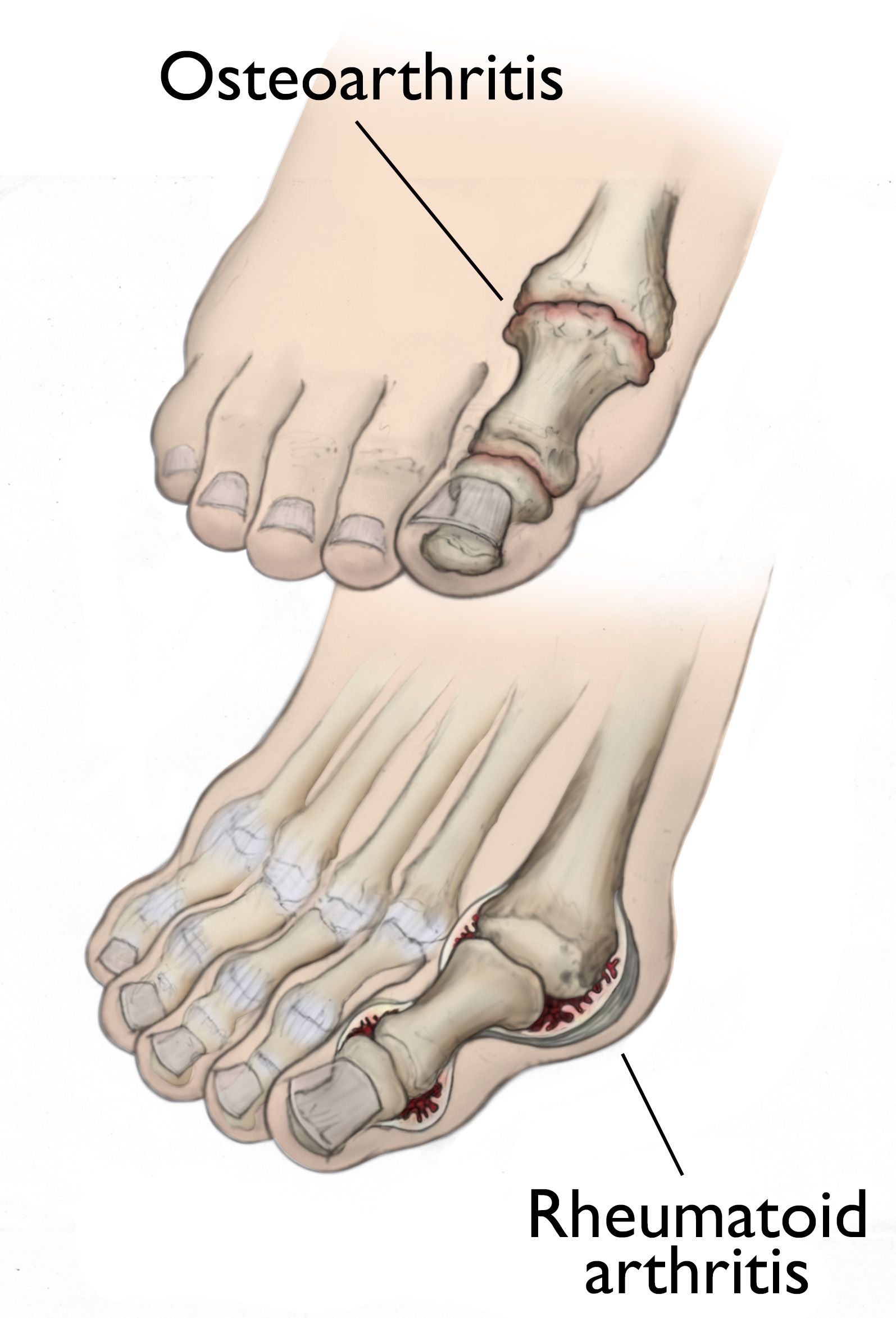 The inflammation of one or more joints causes pain and stiffness common in arthritis in foot. Many forms of arthritis that affect the foot, making it difficult to enjoy activities such as walking. The foot has more than 30 joints and 28 bones which allow movement. The joints are covered with articulate cartilage, which helps the bones to glide over each other, a thin lining surrounding the joints that produce a lubricant fluid to reduce friction. Studies have shown great connections between foot alignment, hip, and knee. Hip osteoarthritis is common among high arched feet people while knee osteoarthritis is common with flat-footed people. With proper treatment, it is possible to lead a fulfilling and active life.
The inflammation of one or more joints causes pain and stiffness common in arthritis in foot. Many forms of arthritis that affect the foot, making it difficult to enjoy activities such as walking. The foot has more than 30 joints and 28 bones which allow movement. The joints are covered with articulate cartilage, which helps the bones to glide over each other, a thin lining surrounding the joints that produce a lubricant fluid to reduce friction. Studies have shown great connections between foot alignment, hip, and knee. Hip osteoarthritis is common among high arched feet people while knee osteoarthritis is common with flat-footed people. With proper treatment, it is possible to lead a fulfilling and active life.
Psoriatic arthritis
This is the inflammation of the tendons and ligaments attached to the bones, causing foot joint pain especially the toes. They cause sausage-like swelling. The irritation happens in the tissue that connects the heel bone and toes, which cause pain when rubbed or pressed on other bones.
Symptoms
- Heel pain that is easily confused with the Achilles tendon.
- Swelling of the toes.
- Stiff ankles and feet.
- Overextended big toe
- Painful calluses and sore joints.
- Bending toes looking shorter like claws.
- The skin around the affected joints turns purplish.
- Flattening arch which leads to rolling of the foot inward while walking or standing.
- The tendency of joints to lock and limit the range of motion.
- Foot swelling.
- Difficulty and pain while walking after a long period of rest or in the morning.
Maintain mobility by taking physiotherapy or wearing shoes that do not pinch and bind areas of inflammation. Take foods rich in omega 3 fatty acids, fiber such as oatmeal, beans, and brown rice, and take green tea to reduce inflammation.
Rheumatoid arthritis feet
Joint inflammation in multiple joints of the feet and hands is a sign of rheumatoid arthritis. It is considered symmetrical because it affects the same joints on both sides of the body and it is autoimmune. This means that the immune system attacks its tissues such as the thin lining covering the joints causing them to swell. The lining, in turn, attacks cartilage, tendons, ligaments, and bones leading to disability and deformity.
Over 85% of patients report painful ankles and feet, causing instability in hindfoot causing deformation of the forefoot. Correcting the plantar stabilizes the ankle and foot, reducing foot deformities and walking disabilities.
The function of footwear in arthritis in feet
Footwear is an effective strategy to improve the function of the feet and reduce pain in arthritis. Women are at greater risk of knee and hip osteoarthritis while the use of high heels shoes has been implicated. Contrary to belief, high heeled shoes do not promote joint degeneration, though they have been associated with the development of foot pain. Arthritis in the foot is prevalent in older people and it increases with age. High heels, slippers, and sandals are poor shoes that cause foot pain in later years, it is advisable to wear average shoes. Poor shoes contribute to poor foot alignment and development.
The foot pain has a modifiable factor, especially if it affects the extremity joint alignment, though little focus is made on foot interventions. Footwear and orthotics interventions are important in foot health. Biomechanical evidence indicates that footwear plays a significant role in the treatment of osteoarthritis of the foot, knee, and hip and the treatment of rheumatoid arthritis. A running shoe-shaped toe rocker sole reduces foot joint pain by decreasing forefoot loading by promoting a normal heel-toe rolling. Custom made foot orthotics reduce pain, increase stride length and steps. Specialized footwear reduces is an effective non-surgical intervention for the feet affected by arthritis.
If you have any questions, please feel free to contact our office located in Cypress, TX. We offer the newest diagnostic and treatment technologies for all your foot care needs.